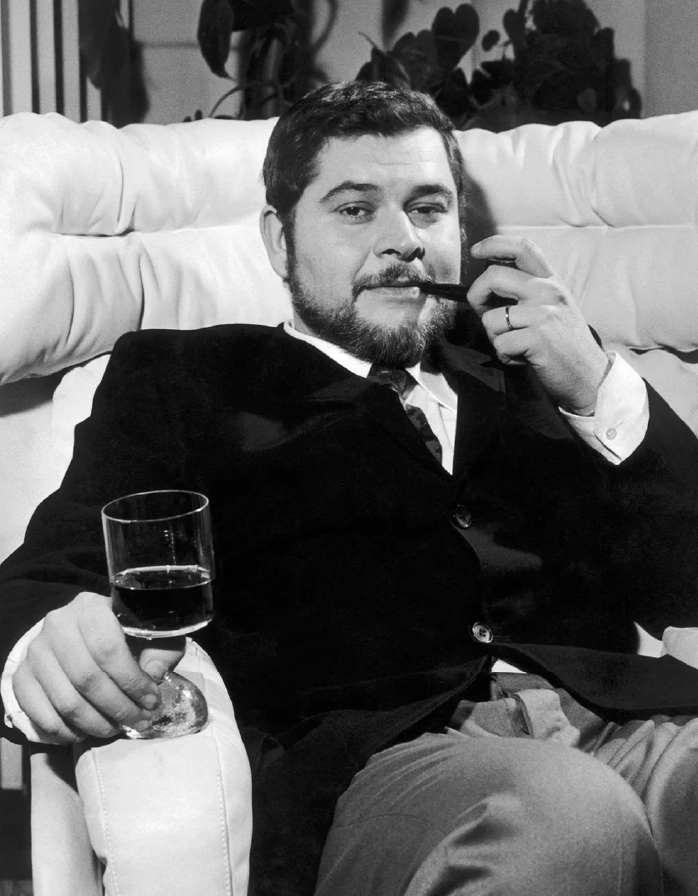
JOE COLOMBO
Born Milan, Italy 1930
A maverick Italian artist, Colombo had a revolutionary impact on mid-century design with his future-focused vision of intelligent technology and designs for integrated living in architecture, furniture, and objects. Captivated by the zeitgeist of the Atomic Era, Colombo believed that he could create the environment of the future, and, in doing so, transformed the language of interior design. His progressive work was driven by the desire to create objects that were independent of the architecture that contained them and could adapt to suit any space, now or in future. He envisioned a new way of living that broke free from traditional approaches and called for radical transformation of society, deviating from conventional norms. His architectural design methodology incorporated studies of ecology, psychology, ergonomics, and other disciplines centered around the contemporary human experience
Given his futuristic aesthetic, it’s unsurprising that Colombo is closely associated with plastic as a material. His Universale chair was the first injection-molded chair made entirely from plastic and one of the earliest plastic chairs to be commercially available. Designs such as the cocooning, throne-like Elda Armchair ensured Colombo’s name would forever be attached to the mid-century sci-fi aesthetic; the likes of the transformable Multichair system exemplified his career-defining focus on low-footprint multi-functionality and versatility. Colombo’s Boby Trolley in plastic, with its wheels with rotary drawers, was conceived as an aid for architects’ drafting tables but gained popularity throughout homes and offices. His best-known technological designs include the Optic alarm clock, and the lighting products Acrilica, Spider, and Ciclope.
Before founding his eponymous studio in 1962, Colombo studied at the Accademia di Belle Arti di Brera and the Politecnico di Milano, and was deeply influenced by the radical avant-garde painting collective Movimento Nucleare. In the following decade before his untimely death, he achieved widespread acclaim, winning one gold and two silver medals at the Milan Triennale, the SMAU prize, the prestigious Compasso d’Oro prize in 1967 and 1970, and the International Design Award in 1968 and 1970. His work is in the permanent collections of major museums around the world, including the Victoria & Albert and the Museum of Modern Art
STUDIOTWENTYSEVEN
JOE COLOMBO

JOE COLOMBO
Born Milan, Italy 1930
A maverick Italian artist, Colombo had a revolutionary impact on mid-century design with his future-focused vision of intelligent technology and designs for integrated living in architecture, furniture, and objects. Captivated by the zeitgeist of the Atomic Era, Colombo believed that he could create the environment of the future, and, in doing so, transformed the language of interior design. His progressive work was driven by the desire to create objects that were independent of the architecture that contained them and could adapt to suit any space, now or in future. He envisioned a new way of living that broke free from traditional approaches and called for radical transformation of society, deviating from conventional norms. His architectural design methodology incorporated studies of ecology, psychology, ergonomics, and other disciplines centered around the contemporary human experience
Given his futuristic aesthetic, it’s unsurprising that Colombo is closely associated with plastic as a material. His Universale chair was the first injection-molded chair made entirely from plastic and one of the earliest plastic chairs to be commercially available. Designs such as the cocooning, throne-like Elda Armchair ensured Colombo’s name would forever be attached to the mid-century sci-fi aesthetic; the likes of the transformable Multichair system exemplified his career-defining focus on low-footprint multi-functionality and versatility. Colombo’s Boby Trolley in plastic, with its wheels with rotary drawers, was conceived as an aid for architects’ drafting tables but gained popularity throughout homes and offices. His best-known technological designs include the Optic alarm clock, and the lighting products Acrilica, Spider, and Ciclope.
Before founding his eponymous studio in 1962, Colombo studied at the Accademia di Belle Arti di Brera and the Politecnico di Milano, and was deeply influenced by the radical avant-garde painting collective Movimento Nucleare. In the following decade before his untimely death, he achieved widespread acclaim, winning one gold and two silver medals at the Milan Triennale, the SMAU prize, the prestigious Compasso d’Oro prize in 1967 and 1970, and the International Design Award in 1968 and 1970. His work is in the permanent collections of major museums around the world, including the Victoria & Albert and the Museum of Modern Art
STUDIOTWENTYSEVEN